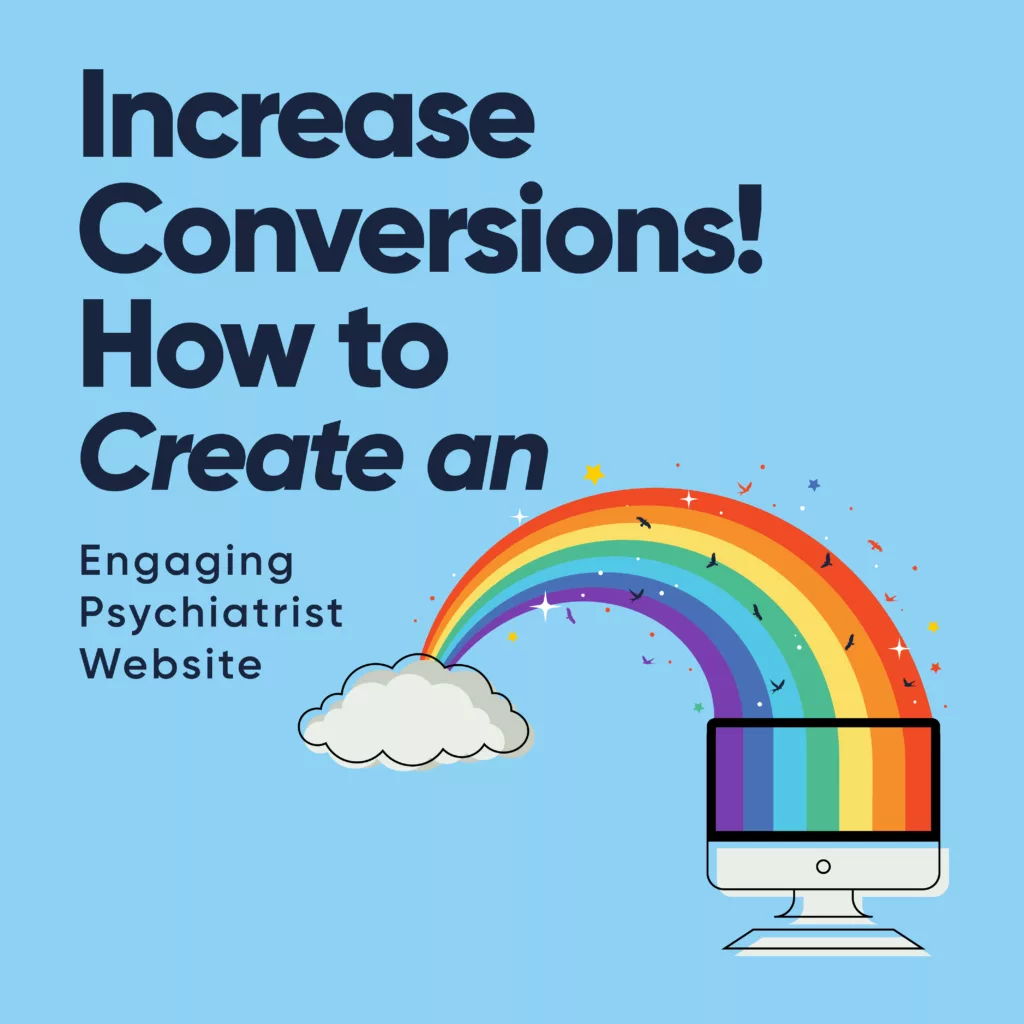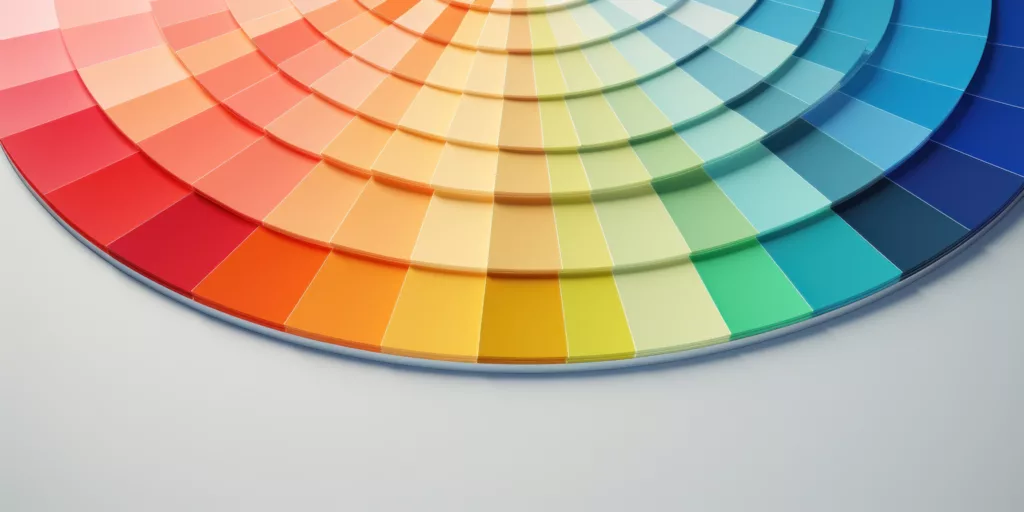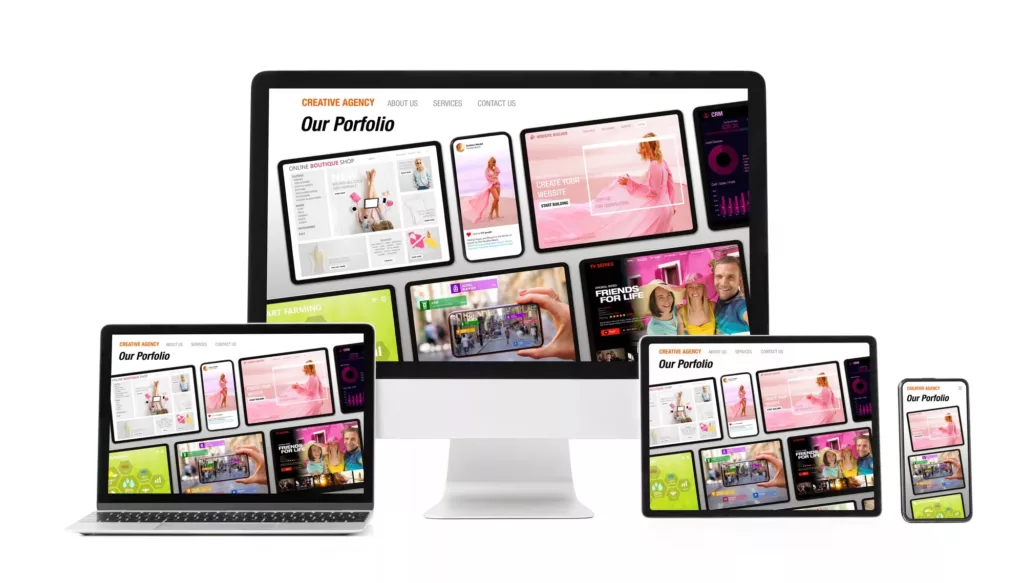How to Create an Engaging Psychiatrist Website Design to Increase Conversions
There’s a fine line in creating an engaging psychiatrist website design.
It’s about striking the perfect balance between professional credibility and a warm, welcoming presence.
Over my years of experience assisting therapists in reaching more individuals and making a substantial impact through visually stunning websites and strategic design, I’ve gained profound insights into the nuances of crafting websites for the mental health realm, especially for psychiatrists.
It’s not just about sleek design or advanced features; it’s about creating a digital space where potential clients feel understood, reassured, and ready to take the next step in their mental health journey.

In the following sections, I’ll guide you through the key elements of creating a psychiatrist’s website that resonates with visitors, establishes trust, and increases conversions.
We’ll explore everything from the initial design aspects like color schemes and user interface to more nuanced areas like SEO, content strategy, and the use of analytics for continual improvement.
So, whether you’re a psychiatrist looking to revamp your online presence or a web designer specializing in this niche, this guide is packed with insights and tips to help you create a website that stands out in this unique and essential field.
Empathetic Imagery and Colors

When it comes to engaging potential clients who are often navigating vulnerable moments, the impact of visual elements cannot be overstated. That’s why, in my experience, employing empathetic imagery and colors is a cornerstone of effective website design.
- Warm and Calming Colors
I always recommend using warm and calming colors to create an immediate sense of welcome and reassurance. Soft blues, gentle greens, and earthy tones not only appeal to the eye but also contribute to a positive emotional response. These colors set the stage for a comforting online experience, something crucial for individuals seeking support. - Authentic Imagery
Avoiding clichéd stock photos is a principle I stand by. Authenticity is key. Personalized images of therapists interacting with clients or serene nature scenes can create a genuine connection. In a field as personal as mental health, authenticity speaks volumes, fostering trust right from the first glimpse. - Thoughtful Font Selection
The choice of fonts may seem subtle, but it plays a significant role in shaping the overall website aesthetics. I recommend selecting fonts that align with the therapist’s brand personality—whether it’s conveying warmth, professionalism, or modernity. Thoughtful font selection enhances readability and contributes to the website’s visual coherence. - Intuitive User Interface (UI)
An intuitive user interface is essential for a positive user experience. I advocate for a design that guides visitors seamlessly through the website, making information easily accessible. A well-organized layout with clear navigation contributes to a user-friendly experience, allowing potential clients to focus on valuable content. - Steer Clear of Clichés
It’s crucial to steer clear of the stereotypical images associated with mental health. Overused visuals like puzzle pieces or staged scenes can feel impersonal and fail to resonate with the real emotions of those seeking help. Originality and authenticity in imagery are what make a therapist’s website stand out. - Consistent Branding
Consistency is key when it comes to an engaging psychiatrist website design. I emphasize creating a visual identity that reflects the therapist’s unique approach and values. Consistency in logos, fonts, and colors not only contributes to a professional look but also reinforces brand recognition, making the website memorable for visitors. - Mindful White Space
Embracing white space in the design is crucial for preventing visual clutter and creating a sense of balance. I emphasize the importance of mindful white space to enhance readability, draw attention to key elements, and provide a visually pleasing browsing experience. It’s about finding the right balance between content and space. As highlighted by Health Literacy Online, white space facilitates the visual separation of design and text elements on a page, contributing to enhanced readability. - Engaging Video Content
Incorporating engaging video content can elevate the website’s appeal. Whether it’s introducing the therapist, showcasing the practice environment, or providing informative snippets, videos add a dynamic and personal touch. I encourage therapists to leverage video content strategically to connect with visitors on a more personal level.
An Engaging Psychiatrist Website Design Should Have a Clear and Compassionate Copy
Equally important to visual elements is the language we use to communicate with our audience. Crafting copy that is clear and compassionate is a fundamental aspect of ensuring a meaningful connection with potential clients.

- Avoid Clinical Language
While therapists are experts in their field, using clinical language can be a barrier to communication. I always encourage therapists to express themselves in plain language, ensuring that the services offered are easily understood by individuals seeking support. Breaking down these communication barriers is essential to creating an inclusive online environment. - Relatable Explanations
Every therapist’s website should feature explanations that resonate with potential clients. The services offered need to be presented in a way that speaks to the experiences and concerns of those seeking therapy. This relatability assures visitors that they are in a space where their needs are understood and can be addressed. - Empathy in Every Word
Empathy should infuse every word on a therapist’s website. Whether it’s describing services, outlining therapeutic approaches, or introducing the team, the copy should convey a genuine understanding of the challenges individuals may be facing. This empathetic tone is the bedrock of building trust and establishing an emotional connection. - Use of Inclusive Language
Inclusive language fosters a sense of belonging for all visitors. I emphasize using gender-neutral and culturally sensitive language to create an environment where individuals from diverse backgrounds feel respected and represented. This approach contributes to a more inclusive and welcoming therapeutic space. - Humanize the Therapeutic Process
Humanizing the therapeutic process in the website copy involves demystifying therapy and presenting it as a collaborative and supportive journey. By using language that emphasizes partnership and understanding, therapists can make the process more approachable for potential clients. - Concise and Impactful Statements
In a digital age where attention spans are short, crafting concise and impactful statements is crucial. I advocate for delivering key messages succinctly, ensuring that visitors can quickly grasp the essence of the therapist’s approach, expertise, and the benefits of seeking their services. - Anticipate and Address Concerns
Proactively addressing common concerns or fears that potential clients may have is a proactive approach in copywriting. By acknowledging and providing reassuring information, therapists can alleviate apprehensions and create a more welcoming environment for individuals considering therapy. - Encourage Open Communication
The website copy should actively encourage open communication. I recommend incorporating language that invites visitors to reach out, ask questions, and express their concerns. This encourages dialogue from the very first interaction, fostering a sense of openness and connection between therapists and potential clients.

Designing for Accessibility
Designing a psychiatrist’s website goes beyond aesthetics—it extends to making the site user-friendly for everyone, including those with disabilities. This isn’t just a best practice; it’s a legal requirement in many jurisdictions. As the owner of a web design agency, I take this responsibility seriously, making it a priority to create websites that welcome and cater to a broad spectrum of users.
- Simple Navigation
One of the keystones of accessibility is maintaining a navigation system that is both straightforward and intuitive. I’ve observed that visitors, regardless of their abilities, should be able to easily locate the information they need without feeling overwhelmed. To achieve this, I advocate for a simple menu structure adorned with clear headings, ensuring that the navigation process is smooth and enhances the overall user experience. - Mobile Responsiveness
In an era dominated by mobile devices, ensuring mobile responsiveness is non-negotiable. The majority of internet users access websites through their smartphones and tablets, making it crucial to guarantee that a psychiatrist’s website looks and functions seamlessly on various screen sizes. A responsive design not only meets user expectations but also aligns with the inclusivity at the heart of web accessibility. - Alt Text for Images
Implementing descriptive alt text for images is another crucial aspect of web accessibility. I prioritize providing alternative text descriptions for images on the website, aiding users who rely on screen readers or those with visual impairments. These descriptions convey the content of images, ensuring a more inclusive browsing experience for all visitors. - Color Contrast and Readability
Ensuring adequate color contrast and readability is essential for accessibility. I emphasize using color combinations that facilitate clear visibility and readability for all users, including those with visual impairments or color vision deficiencies. This attention to detail enhances the overall accessibility and usability of the website, fostering an inclusive online environment.
Integrating User-Friendly Contact Options
Converting a visitor into a client is not merely about offering services; it’s about establishing a seamless connection. Recognizing this, I emphasize the importance of providing straightforward and accessible contact options.
- Clear Call-to-Action (CTA)
Placing a clear and inviting Call-to-Action (CTA) on each page is a strategic move. This isn’t just a design element; it’s a guide, encouraging visitors to take that next step toward engagement. Whether it’s scheduling an appointment, sending a message, or accessing essential resources, a well-crafted CTA serves as a gentle nudge, steering visitors toward conversion. It’s about making the process intuitive and encouraging, eliminating any hesitations a visitor might have about reaching out. - User-Friendly Contact Forms
The gateway to communication often lies in well-designed contact forms. As the architect behind these digital spaces, I emphasize creating forms that are not just functional but also user-friendly. The goal is to make it as convenient as possible for visitors to reach out, eliminating any potential barriers. Keeping the forms concise and asking only for essential information is a deliberate strategy. Visitors should feel a sense of ease and simplicity as they complete the form, without being overwhelmed by unnecessary details. - Virtual Consultation Booking
Streamline the process for potential clients by incorporating a virtual consultation booking system directly on your website. This feature allows visitors to schedule appointments at their convenience, empowering them to take proactive steps toward seeking mental health support. A user-friendly booking interface enhances accessibility and encourages engagement. - Live Chat Support
Integrating live chat support provides visitors with an immediate and direct channel for inquiries. This real-time interaction can address concerns, offer assistance, and guide potential clients through the initial steps. A live chat feature adds a personal touch, demonstrating your commitment to responsiveness and client care.
Enhancing Engagement Through Educational Content
In the realm of mental health, where trust and credibility are paramount, the integration of educational content becomes a cornerstone of a well-rounded web presence.
- Blogging for Connection
Maintaining a blog section on the website serves as a dynamic platform for establishing a deeper connection with visitors. It’s not just about showcasing expertise; it’s about creating an ongoing conversation. It’s about creating content that resonates with the target audience, making complex topics accessible and relatable. - Incorporate Multimedia
Diversifying content is the next step in creating a truly engaging online experience. The incorporation of multimedia elements, such as videos and podcasts, adds a dynamic layer to the educational effort. Beyond text, visual and auditory content can captivate and inform in different ways. - Resourceful Webinars
Conducting webinars allows therapists to delve into specific topics in depth. I advocate for webinars as they offer a live, interactive platform for sharing insights, discussing challenges, and connecting with the audience in real-time. These sessions can be valuable resources for therapists seeking continuous professional development and networking opportunities. - E-books and Downloadable Guides
As part of my commitment to providing valuable resources, offering e-books and downloadable guides adds a tangible dimension to educational content. These materials can serve as comprehensive references, covering a range of relevant topics and providing therapists with practical insights and tools to enhance their practice. - Thoughtful Infographics
Creating informative and visually appealing infographics is another avenue I explore to simplify complex information. These concise graphics can be powerful tools for conveying key concepts, statistics, or therapeutic approaches, ensuring that information is easily digestible for therapists and their clients alike.
Related Reads for Website and Branding Inspirations
- A Unique Website for Family First | Behind the Scenes
- A New Digital Home for The Comfy Place
- The Best Therapist Websites of 2022!
- Ten Great Therapist Website Examples
- Psychologist Website Design Trends 2023
- 6 Things When Creating Video Content For Your Business and Therapist Website
- 12 Future Proof Tips: Website Design For Small Businesses And Therapists
- Web design for Counselors
- Engaging Psychiatrist Website Design
- Copywriting for Therapists Example- Therapist Website Design
- The Best Website Hosts For Small Businesses and Therapists
- How to Create Effective Therapy Website Tagline for Your Practice
- Professional Website Fonts: Choose the Right Typography for Your Therapy Website
- Branding And Therapist Logo – Use Your Therapist Logo Consistently
- Logo Designer – Looking for a Professional Designer
- Therapist Logo Ideas – Find Inspiration in the World Around You!
- Different Logo Types for Therapist Business Branding
- Benefits of a Logo for your Therapist Branding
- Therapist Logo Design – Define Your Brand Identity
- Is It Worth Making a Website for a Small Business?
- Why Doesn’t My Website Show Up on Google Search? Common Issues and Fixes
Need any of the following?
Here are some Sample Websites We’ve Created:
- Website Design For Consulting Business
- Psychotherapist Website Example
- Private School Website Design
- Websites For Counselors
- Counselor’s Website Example
- Website Design For Small Business
- Professional Design
Check out our Portfolio for more!
Getting Started


